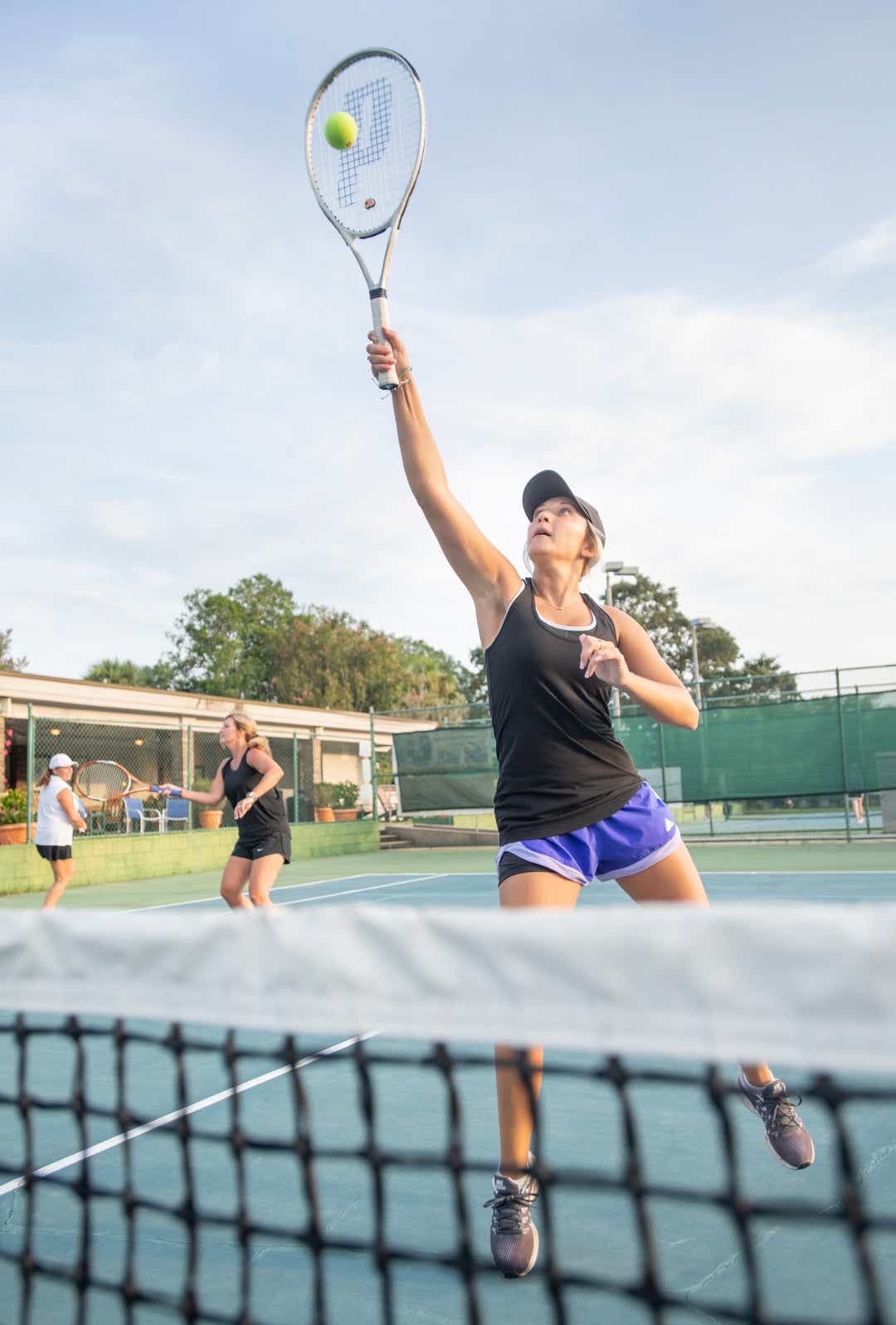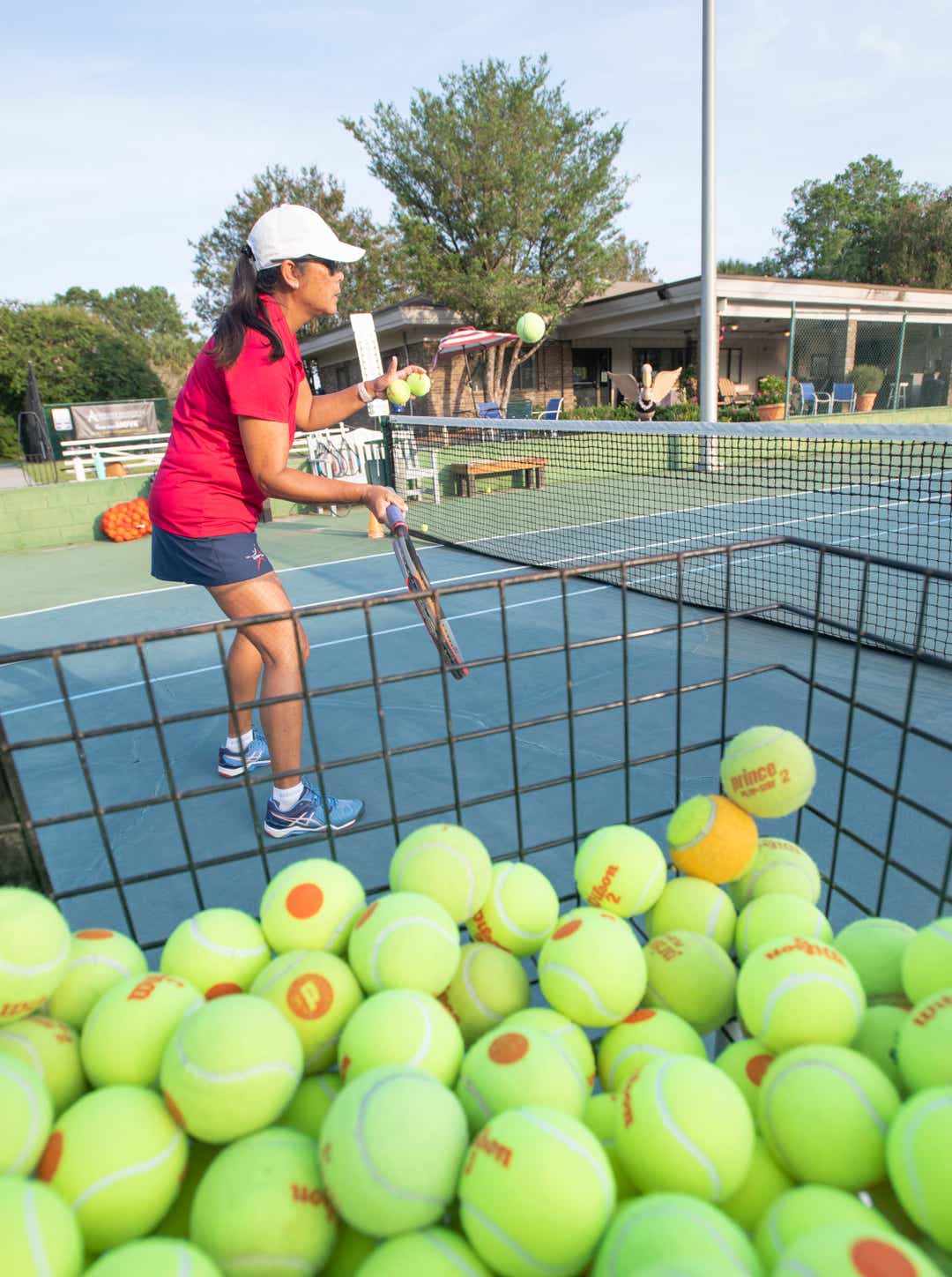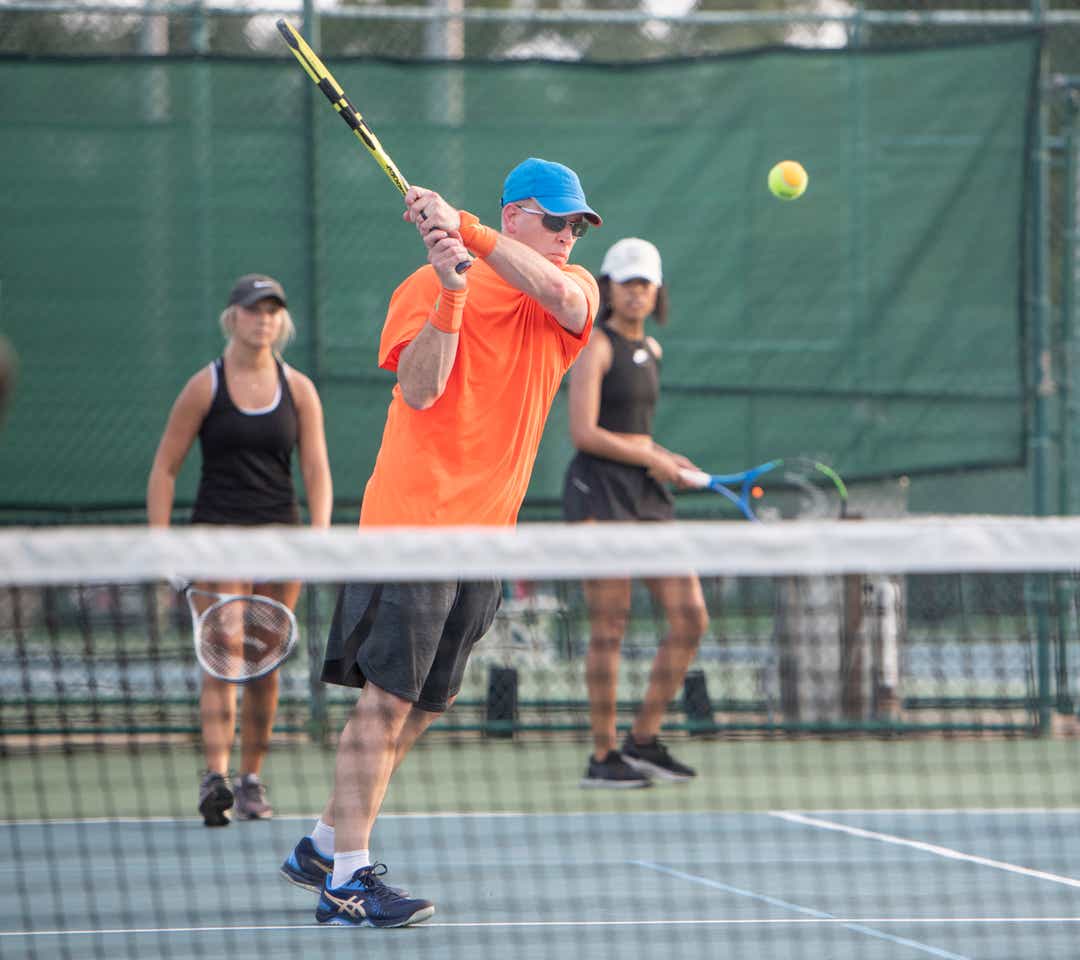What better time to take the initiative in learning a lifelong physical and social skill than when many traditional fitness options face the unusual hurdles of the COVID-19 pandemic.
Whether you’re taking expert coaching from one of many local pros or simply trying to keep a rally rolling on a neighborhood court, there are plenty of local ways to up your tennis game in a safe way during the COVID-19 pandemic.
As long-time Roger Scott instructor Brian Sakey used to say, a quote now memorialized on the facility's street billboard, "Play on your front foot, mate!"

Tennis and COVID-19
It should come as little surprise that tennis COVID-19 regulations begin in the common spaces and objects at many tennis facilities.
The United States Tennis Association has released safety guidelines throughout the pandemic, including early recommendations to suspend play nationwide, which led to the closure of many Pensacola city courts.
More: Four quick challenges to dial in your golf game this summer
USTA guidelines include extensive sanitization of hands, racquets, baskets and other points of common contact. Lesson groups are recommended to be smaller and etiquette is to leave a court’s distance between players if possible.
Tennis companies have begun providing new products to adjust to social distancing measures.
According to Austin Racine, a former Booker T. Washington and Division I tennis player who now works with Wilson Sporting Goods, companies have even marketed selling two-ball packs numbered one through four to limit ball-contact between players in singles and doubles matches.

Keep tennis lessons casual at first
When it comes to lessons, the best bet is not necessarily to dive into one-on-one coaching, according to Racine.
“If you’re going to take a private lesson, that’s $50 or more dollars,” said Racine, who’s given private lessons locally since he was 16. “If you want to get into the sport, the best way to do it is grab a couple buddies and go do a group lesson. Then you’re playing with friends and getting better at the same time.”
More: FHSAA: Amid COVID-19 pandemic, successful models exist for 'low-contact sports'
The Roger Scott Tennis Center has recently conducted a Love to Learn for Adult Beginners course held each Wednesday from 6 to 7 p.m. Sessions are $30 and loaner racquets are available, according to the event’s Facebook page.
If group lessons spark an addiction, Racine said he often recommends his clients to supplement weekly training sessions with casual rallies and matches against players of similar skill and ambition.
“If you put in the two to three times per week, and not just taking instruction… I wouldn’t suggest people spend a lot of money for lessons,” Racine said. “It would be better to take one lesson per week and the rest of the time is just getting on the court and playing with friends.”

Use a wall if you don't have a partner
It may seem difficult to train for tennis without someone standing on the opposite side of the net, but drills on training walls can help refine the muscle memory required to play consistent tennis. Pensacola State College and the University of West Florida are among the area’s available tennis walls.
“Getting out at PSC and hitting on the wall is a huge beneficial factor to getting better just because of the footwork,” Racine said. “The walls at any level will help you get better. It’s a great way to practice by yourself.”
Find free tennis training on social media
As in many fields, the Internet provides near-unlimited free access to tennis training.
Even Racine, the son of longtime UWF tennis coach Derrick Racine, consulted YouTube to help him reconstruct his forehand during his high school career.
Combing free Internet instruction with self-analysis – such as videoing one’s own swings and comparing it to that of professionals – can give beginners an early opportunity for accelerated learning.
“It’s free instruction at your disposal. If you watch professionals’ strokes in slow motion, you can really get down [your stroke] … It’s about seeing the strokes when you’re learning the technique. If you don’t want to spend a lot of money, there are free lessons right there.”
Eric J. Wallace can be reached at ejwallace@pnj.com or 850-525-5087.
tinyurlis.gdu.nuclck.ruulvis.netshrtco.de
مقالات مشابه
- مغلوب ساختن پیشی جستن rescinds قوانین قرار دادن دانشجویان خارجی در فلوریدا در خطر اخراج
- Hurricane Sally damage? Know insurance red flags to avoid problems
- آیا می خواهید درباره اسباب بازی بیشتر بدانید؟
- چگونه قد بلند شویم؟ 100% تضمینی️ رشد سریع قد وان قد
- جی پی اس آفلاین خودرو چگونه کار میکند؟
- با راه های افزایش عزت نفس پادشاه جمع های دوستانه شوید
- شرکت صادرات و واردات کالاهای مختلف از جمله کاشی و سرامیک و ارائه دهنده خدمات ترانزیت و بارگیری دریایی و ریلی و ترخیص کالا برای کشورهای مختلف از جمله روسیه و کشورهای حوزه cis و سایر نقاط جهان - بازرگانی علی قانعی
- شرکت صادرات و واردات کالاهای مختلف از جمله کاشی و سرامیک و ارائه دهنده خدمات ترانزیت و بارگیری دریایی و ریلی و ترخیص کالا برای کشورهای مختلف از جمله روسیه و کشورهای حوزه cis و سایر نقاط جهان - بازرگانی علی قانعی
- به عنوان بادها فشار پنج مایل باتلاق آتش جنوب ساکنان بازگشت به پیدا کردن سوخته و خانه و زمین
- 'Ain't no hurricane going to stop Joe Patti's': Pensacola landmark rebounding from Sally